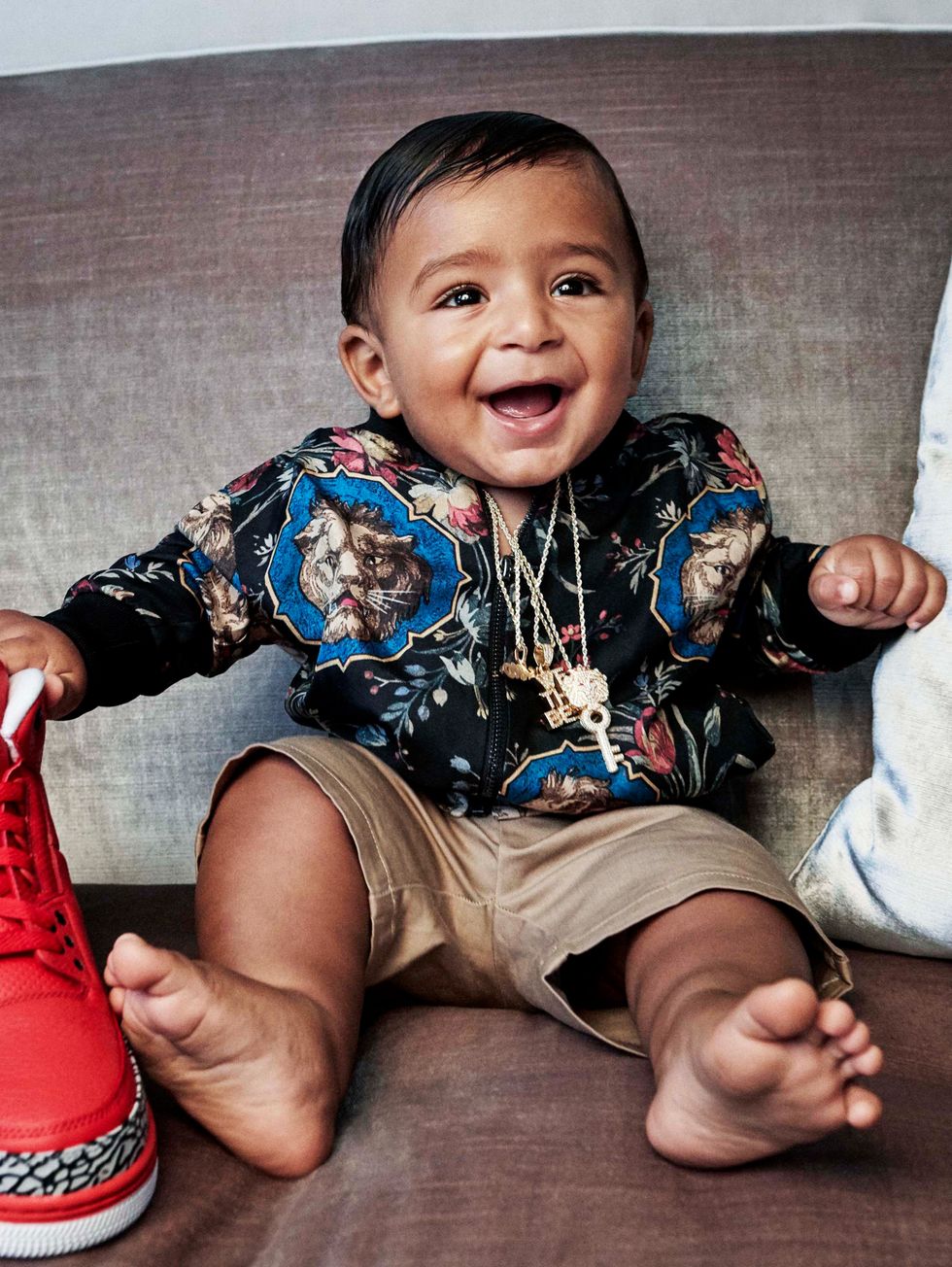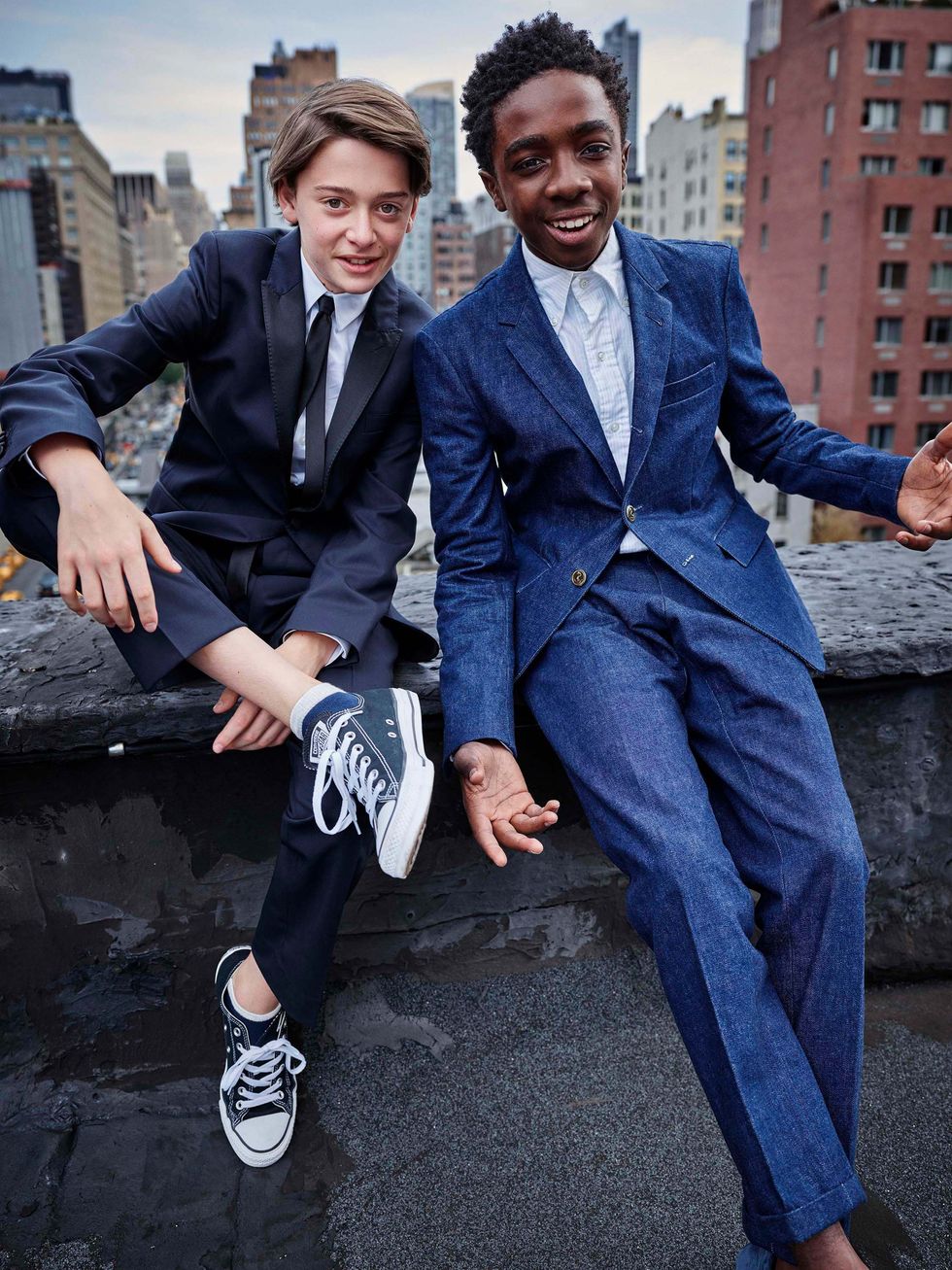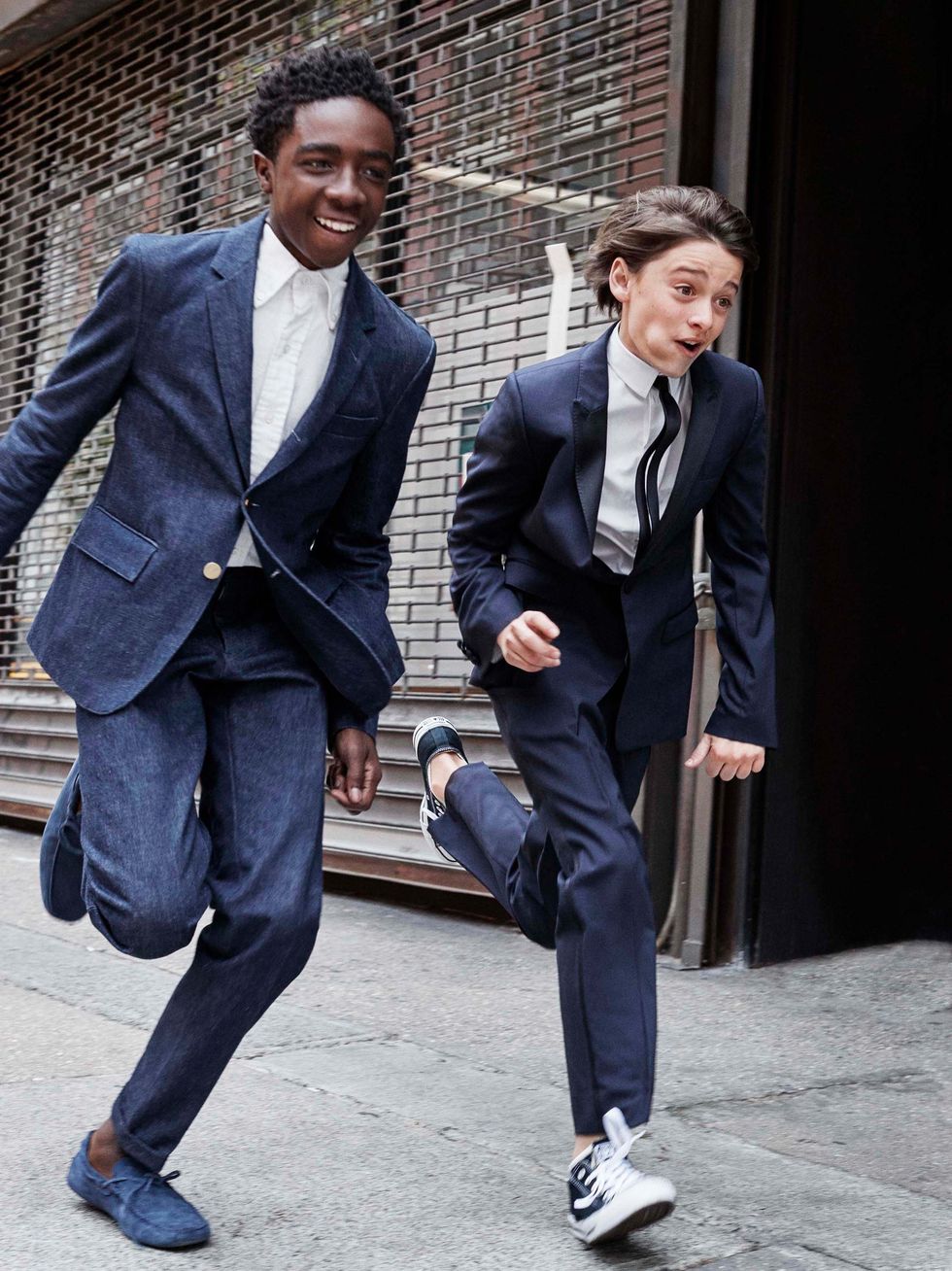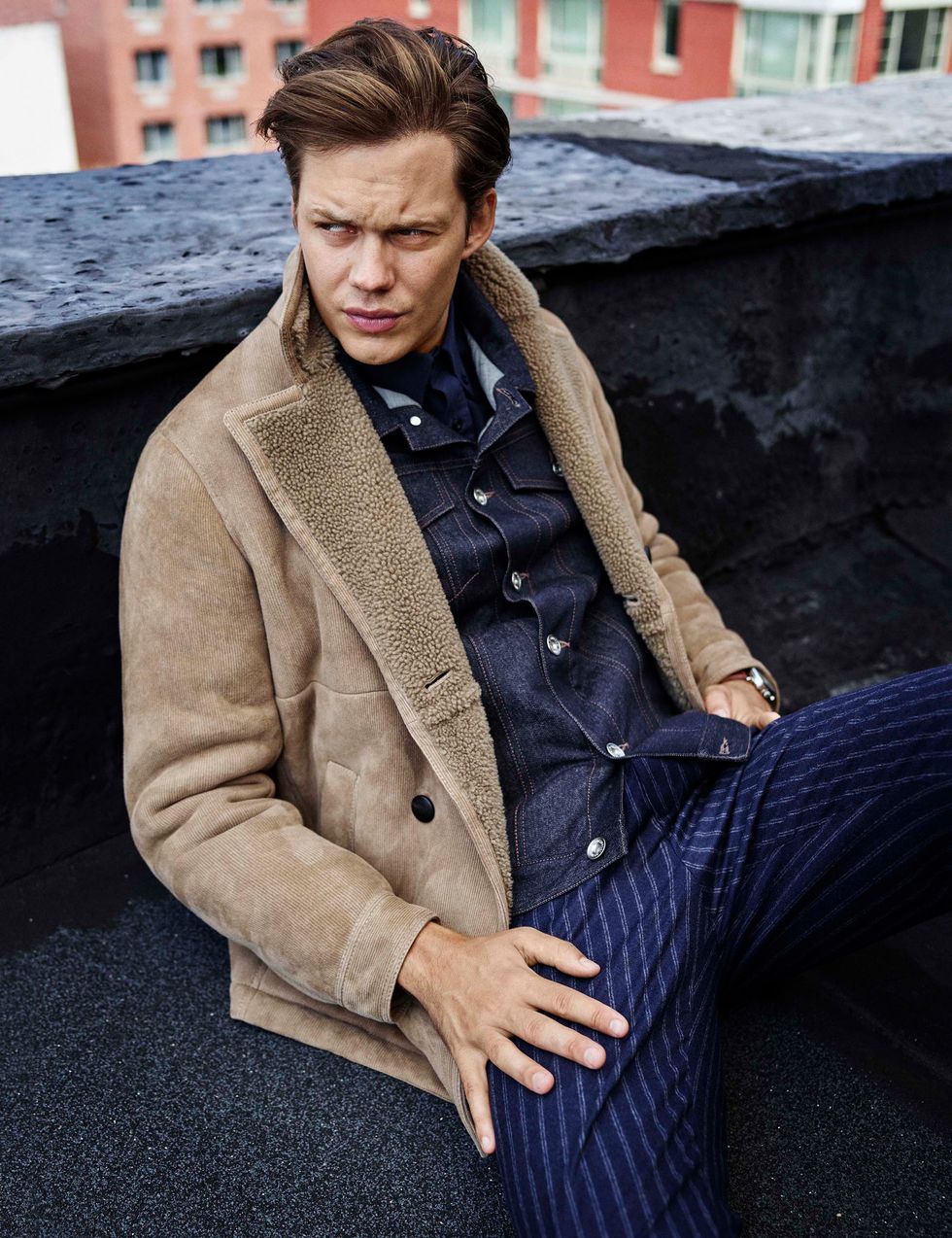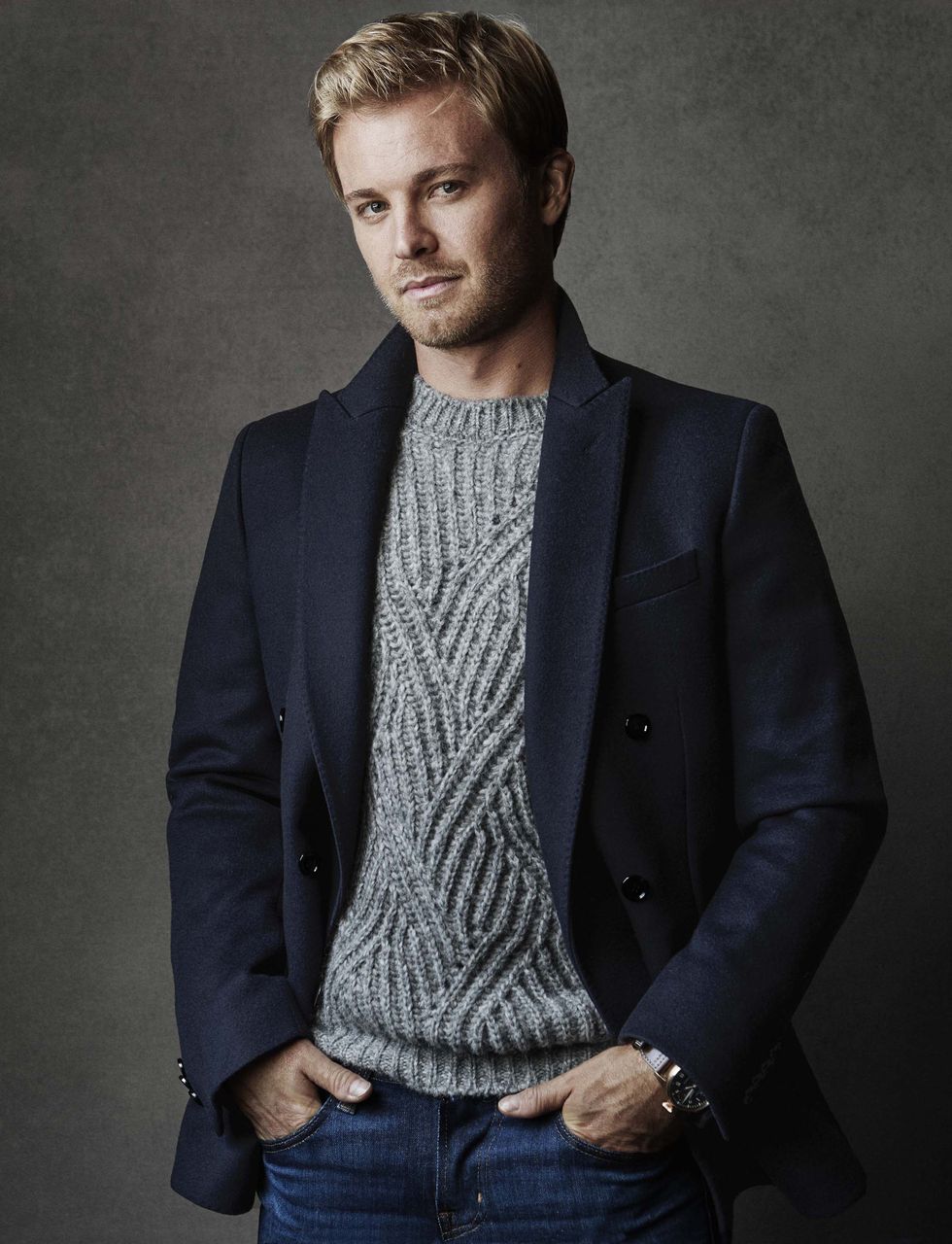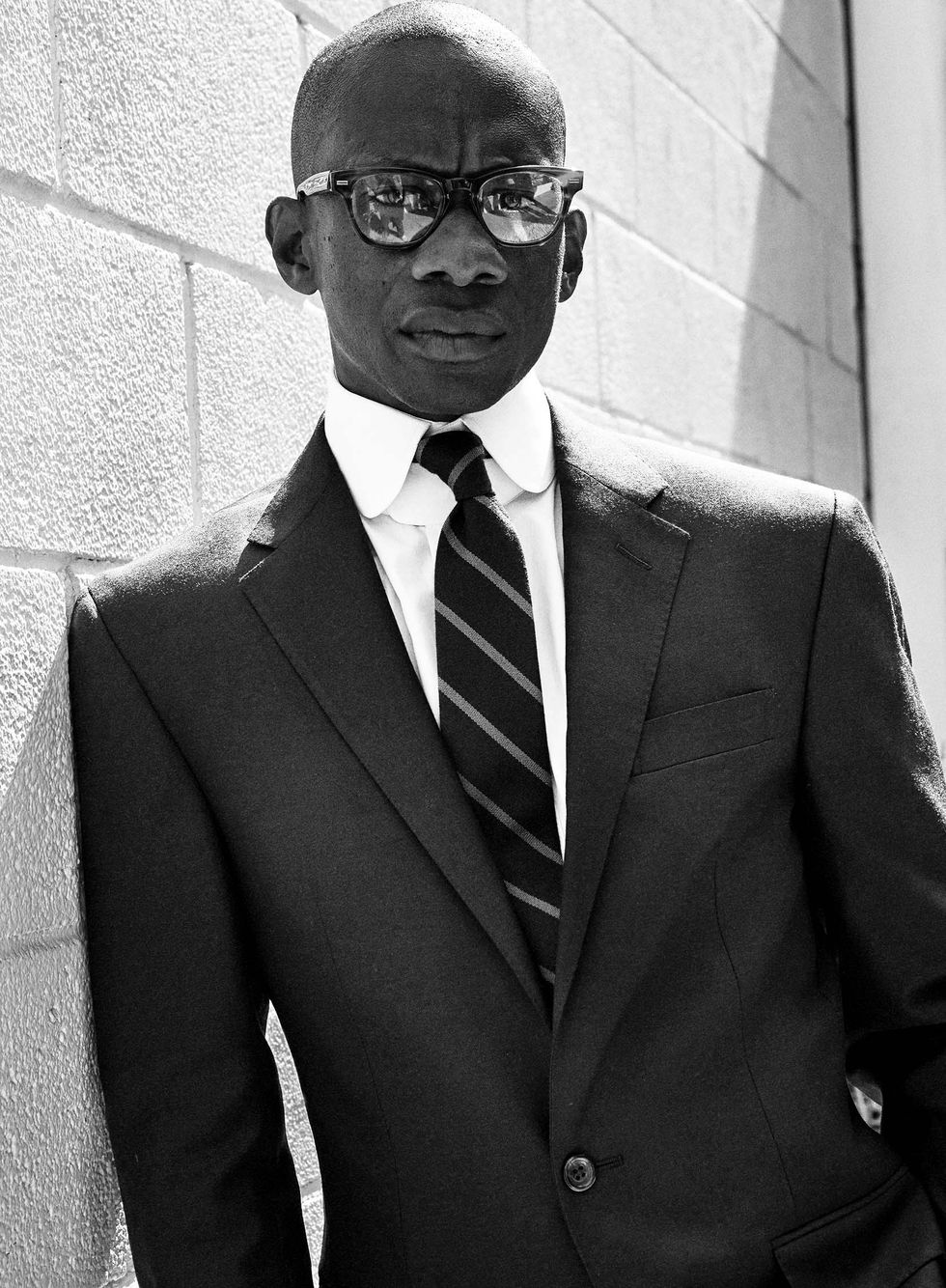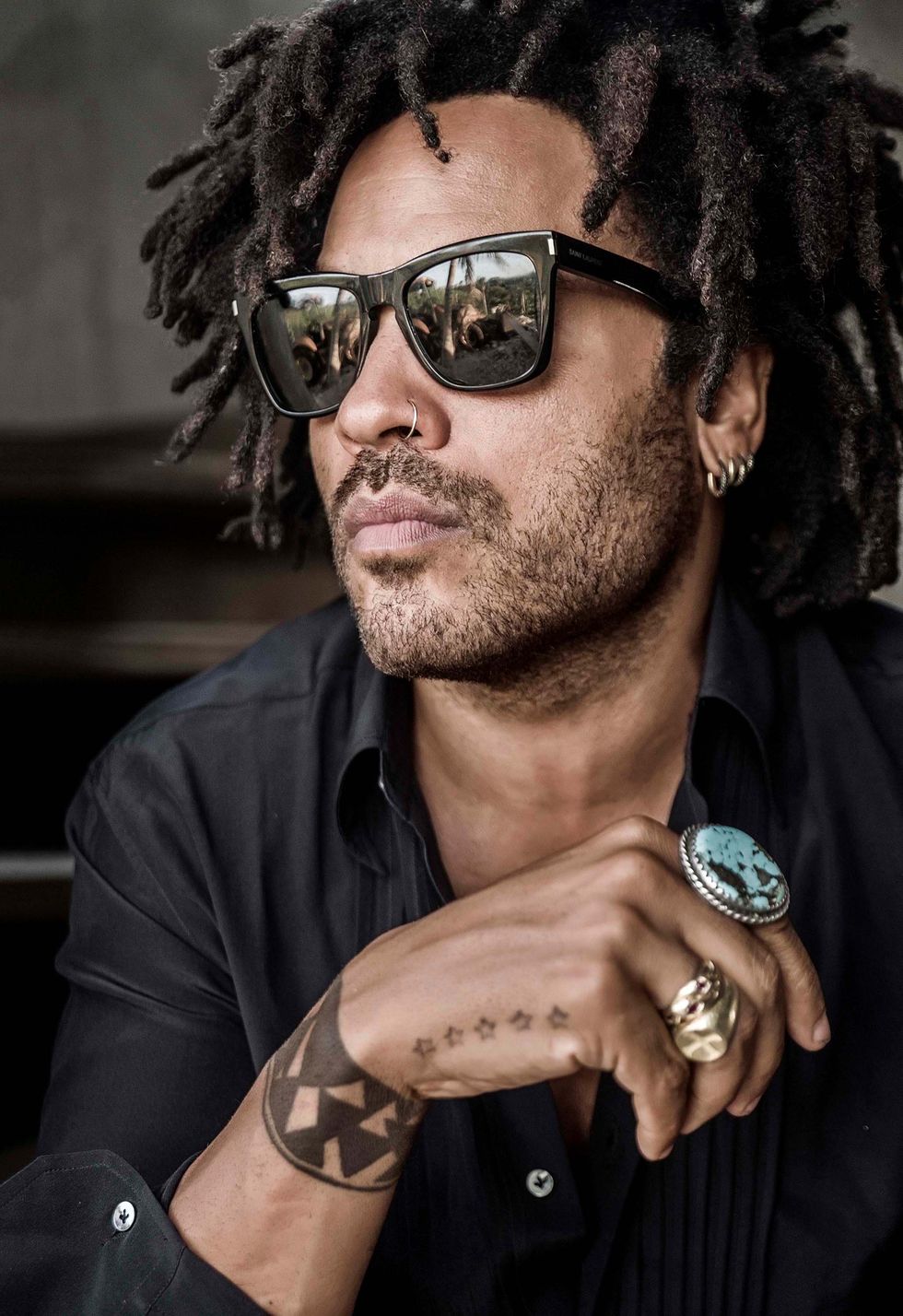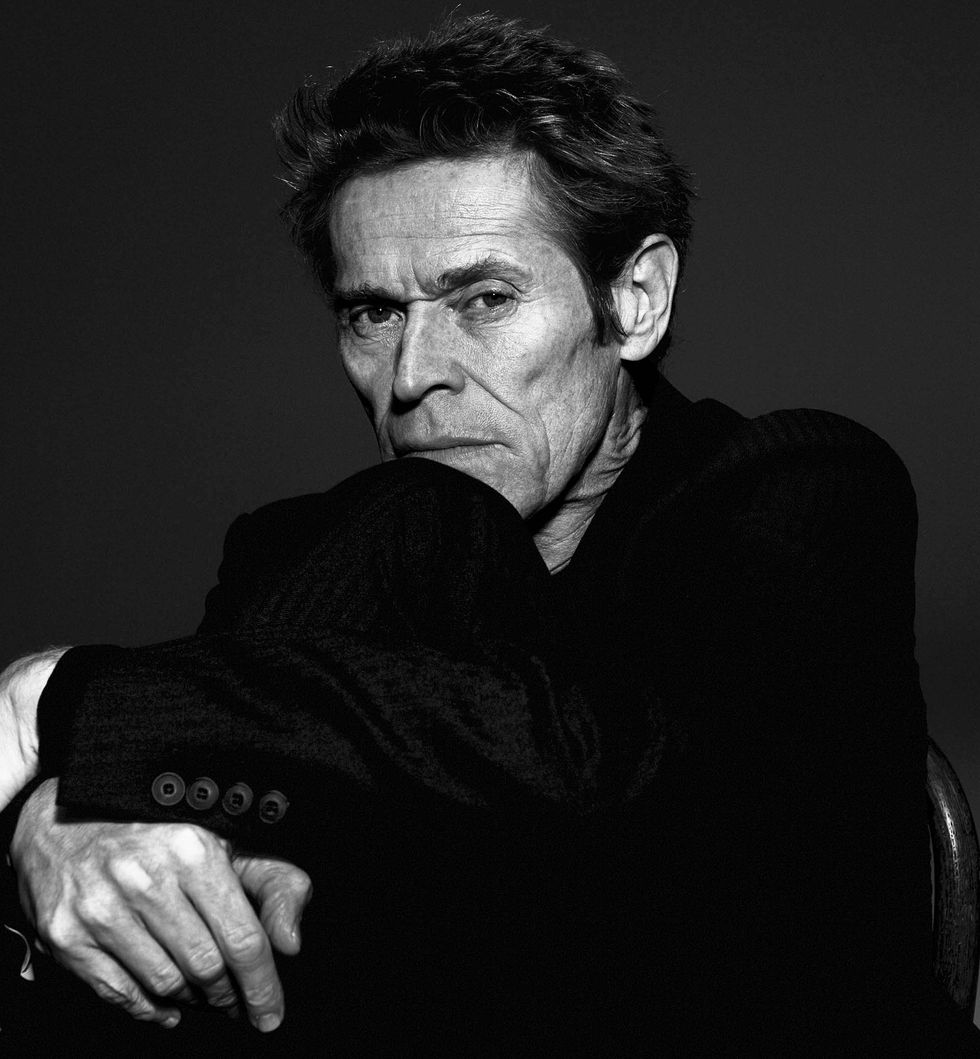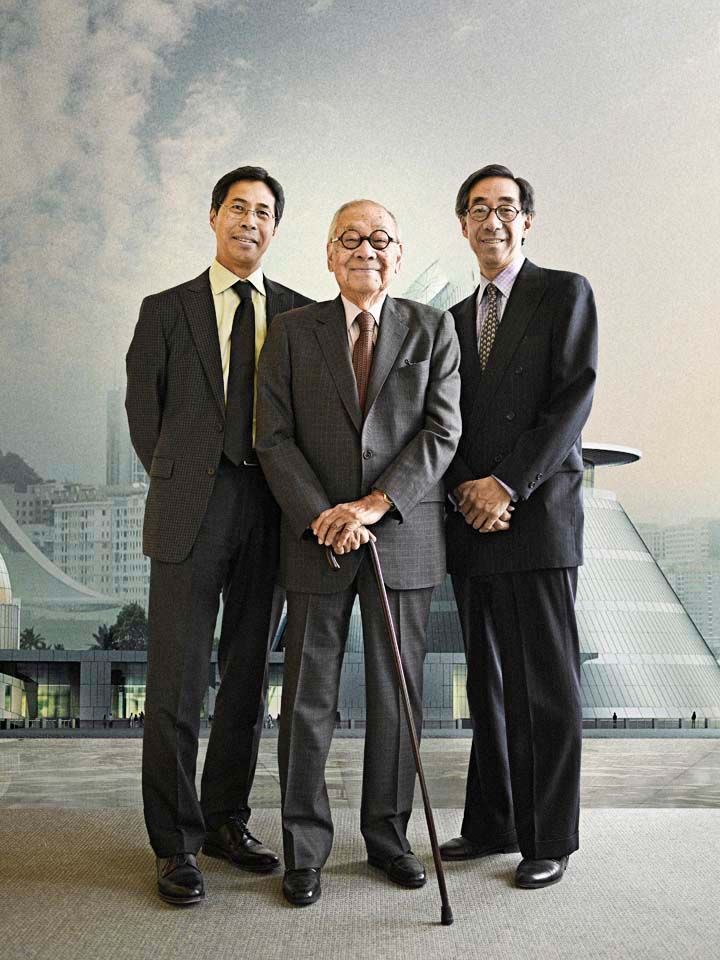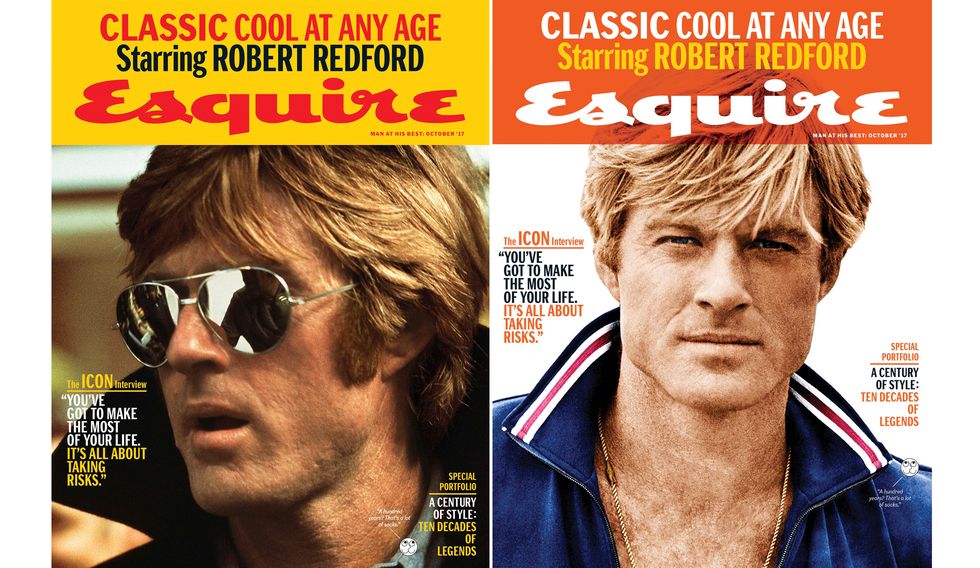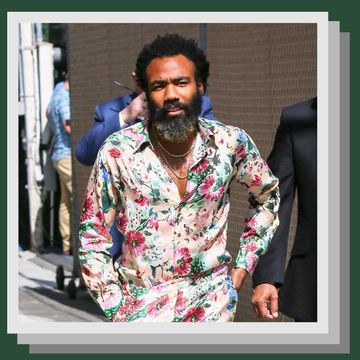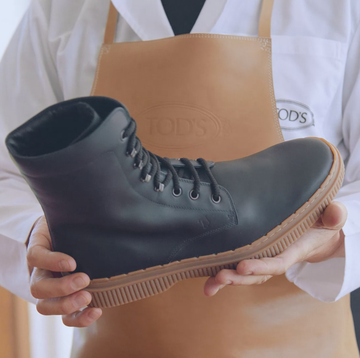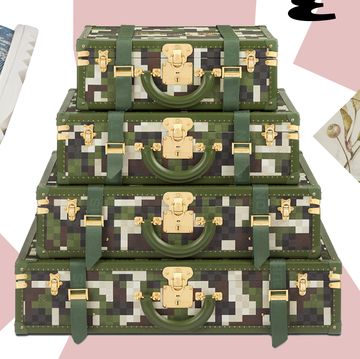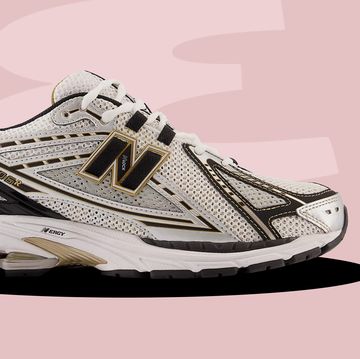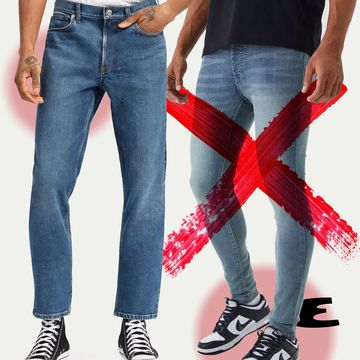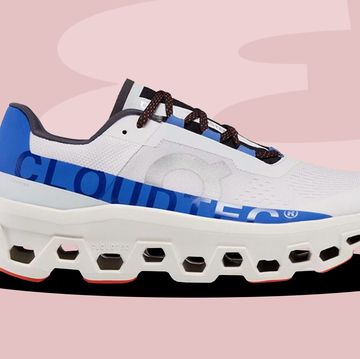At Esquire, we believe that true taste transcends age. We believe that great style is not about the demographic that marketers want to put you in—rather, it’s about your sensibility. Being an individual. The confident man embraces his personal style—and enjoys how it evolves across the decades of his life.
Asahd Khaled came into this world last October with about six million people watching. His father, hip-hop hitmaker and Snapchat god DJ Khaled, broadcast his son’s arrival over the app despite the protests of the parent doing all the pushing: Asahd’s mother and social-media manager, Nicole Tuck. Yes, this baby has a social-media manager.
Eight months later, Asahd was featured in his own Cartier bracelet and custom chains on the cover of his father’s latest album, Grateful. He’s accumulated more than a million Instagram followers, sat in on meetings with the likes of Nas and Rihanna, and acquired a Ferrari-branded walker that he cruises around the living room. He’s also been a social-media star since birth, a fact his mother takes in stride. “It’s going to be funny to see when he gets older,” she says. “He’s either going to be like, ‘Get the phone out of my face!’ or he’s going to be like, ‘Can I have ten phones, please?’ ”
Until then, he is constantly outgrowing his designer wardrobe, be it the David August tux he wore to match his dad at the Grammys or the latest Italian fashions. But Tuck, a former stylist, knows how to clothe a budding superstar: “I purchased certain pieces from the fall Gucci collection in the size of a twenty-four-month-old and larger, so he can grow into the collection.” The kid’s gotta stay fresh—it’s part of his brand.
The last we saw of little Will Byers, Noah Schnapp’s character on the Netflix megahit Stranger Things, he was freshly rescued from the clutches of an interdimensional monster and hocking up slugs into his bathroom sink. Since then, we’ve noticed Schnapp and his teenage costars just about everywhere: channeling Mick Jagger on Lip Sync Battle; winning a SAG award; and, in interview after interview, evading inquiries about the plot of the newest season of Things (premiering this month) with the savvy of much older stars.
That’s the thing about Schnapp: His résumé may be the envy of his fellow kid actors (besides costarring on Things, he voiced Charlie Brown in 2015’s The Peanuts Movie and worked with Tom Hanks and Steven Spielberg in the same year’s Bridge of Spies), but he’s growing up fast. The thirteen-year-old has tact beyond his years—evident in those interviews, and again when he took to Instagram to address public speculation about his character’s sexuality. (To him, it’s beside the point: “A good show leaves a lot of unanswered questions.”) One thing that’s not keeping pace with his ambitions? His shoe size. “You know what I look forward to? There are always shoes that look really cool, but they don’t fit me at my size. I can’t wait to be able to fit into them.” A great sneaker collection takes time, kid.
When Caleb McLaughlin and two of his Stranger Things costars, Millie Bobby Brown and Gaten Matarazzo, helped themselves to the Emmys stage last year to perform their own rendition of “Uptown Funk,” they brought much-needed levity to an awards season packed with drama. On the series, McLaughlin plays Lucas, the seemingly lone sober-thinking friend among a cohort of kids. But at the Emmys, he was every bit a fourteen-year-old showman. (Thank his years on Broadway as a young Simba in The Lion King for his stage presence.)
In a silvery jacquard jacket, pipe-cleaner pants, and sparkling dress slippers, he moved with the swagger of someone who understands the power of the tuxedo, pulling at his lapels and throwing back his shoulders. And while his friend Noah Schnapp can’t wait to grow into new clothes, McLaughlin laments the fact that he’s growing out of his old ones. “I really liked the tux I wore to the Emmys. The next day, I couldn’t even fit into it. Now my arms would pop right through it.” Lucky for the actor, his next growth spurt is the perfect excuse to try out some new looks.
Bill Skarsgård began his twenties as merely the younger brother of Alexander Skarsgård, playing parts in Swedish indies and dressing in an unsettled mix of the bright athletic wear of his teens and the requisite Nordic skinny jeans. He’ll finish the decade as an actor in his own right, crossing over into big-time American movies and adopting the globetrotting uniform of muted minimalism.
“Until your mid-twenties, you’re still growing up mentally,” he says. “It’s fair to say that there’s a bigger difference between twenty and twenty-five than between twenty-five and forty in terms of who you are, how you relate to your work, and what you want out of it.” With his turn as Pennywise, the demonic clown popping out of sewer grates and terrorizing children in this year’s adaptation of Stephen King’s classic It, Skarsgård is staking his claim to work that poses a real challenge. And though he’s more sure of who he is and what he wants, he knows it’s far too soon to get comfortable. “Playing Pennywise will change my life and career forever. It’s going to change my path. And who knows where that path might lead me?”
That’s one lesson he’s learned sooner than most of us: Never make the mistake of thinking you know where you’re headed.
Nico Rosberg has spent two thirds of his thirty-two years racing cars, and eleven of those years in the singular pursuit of becoming World Champion of Formula One (like his father, Keke Rosberg, before him). At an age when most men are trying out career paths like they try on jeans, Rosberg dedicated himself to the F1 racing calendar, chasing down glory across the globe. Last year, in the final race of a neck-and-neck season against his rival and Mercedes teammate Lewis Hamilton, Rosberg crossed the finish line of the Abu Dhabi Grand Prix and became World Champion, finally meeting the goal he’d set in childhood. Five days later, he announced his retirement.
“I never thought that I would stop right after. I never considered that,” says the champ. But now that he’s done it, he’s not particularly surprised. “This feat that often seemed nearly impossible, I achieved it, and with incredible intensity. That’s not an intensity I would want to continue with forever.”
So what does a freshly retired thirty-two-year-old do with the rest of his life? Rosberg is renewing his focus on family—he and his wife, Vivian Sibold, are expecting their second child— and making smart use of the money he’s earned. The former racer is looking to enter the equally breakneck world of Silicon Valley tech investing, settling into a carefully edited selection of Italian tailoring that’s a far cry from the baggy shorts he wore in the past.
Does he ever question the choice to step down at the pinnacle of his career? “There was always going to be a time when I’d say, ‘Okay, this has been awesome, but now I want to change,’ ” he says. “For me, this is the right thing.”
Before Troy Carter became the global head of creator services at Spotify, and before he was named the entertainment advisor to Prince’s estate, managing the Purple One’s massive music catalog, he was a kid from West Philadelphia who sported the signature looks of baggy ’90s hip-hop clothes and brightly colored Dr. Martens. In between, he interned under Sean Combs at Bad Boy Entertainment and oversaw the rise of Lady Gaga and the careers of artists such as Eve and John Legend. He launched his own entertainment and branding firms. He became a tech venture capitalist, investing in start-ups like Warby Parker and Uber, even taking a turn on Shark Tank.
Carter has developed a sense of style built around his own comfort yet still appropriate for any room he may walk into. (Think fine tailoring, luxe fabrics, and reliable basics like black Acne jeans.) But as far as Carter has come, he’s held on to some of the better aesthetic traditions rooted in West Philly: smooth fades, crispy lineups, and polos buttoned all the way to the top. “I’ve worn a tie maybe three times over the last five years,” he says. “But we were buttoning the top button when I was twelve. I think that still dresses up well if you throw on a blazer.”
Carter’s special vantage point from his forties, where as much lies ahead of him as behind him, lets him incorporate parts of his past into his future. “I had a lot of mentors in the music business who were twenty years my senior who taught me not only about business but about life. Now I’m almost the elder statesman,” he says. “I’m really looking forward to being a resource to that next generation of managers and artists and continuing that tradition of stewardship like Jim Iovine, Clive Davis, and L. A. Reid did for me.” The new class should be so lucky.
His name is shorthand for a certain flavor of rock ’n’ roll style: a retro-psychedelic blur of denim and suede, fringe and fur, statement jewelry, platform boots, and wraparound shades. The guy knows clothes, and how to enjoy them. But he’s not interested in repeating his greatest hits. “I used to wear feather boas and stuff, right? They worked then; now they don’t,” he says. “If you’re not careful, you can become a caricature of yourself.”
The four-time Grammy winner won’t be typecast so easily. His next album, out in 2018, will be his twelfth release in a career spanning three decades, but Kravitz keeps finding new creative outlets. He’s taken on film roles in The Hunger Games and The Butler, appeared on the Fox series Star, and founded his own creative agency, Kravitz Design (with clients including Swarovski and Leica). He’s also father to Zoë Kravitz, a next-generation style setter and one of the brightest lights in young Hollywood. “She has her own sense of who she is, her own sense of style,” Kravitz says. “I learn a lot from her, to tell you the truth.”
Now fifty-three, Kravitz can enjoy the sweet vindication of seeing his favorite trends returning to favor. “In the ’90s, I was the guy who brought flares back,” he says of a look that, even then, harked further back to ’70s icons like Sly Stone. “There’s things that Hedi [Slimane] did for Saint Laurent that look a lot like the stuff I was doing. The flares, the suede jackets—he brought them back and put a modern twist on them.”
He might want to hang on to that boa after all. — Jon Roth
The near-forty-year filmography of Willem Dafoe reads like a wish list of roles for ambitious character actors. He’s shown up in everything from art-house indies (Basquiat, Antichrist) and Oscar-worthy classics (Platoon, The Aviator) to college-kid favorites (American Psycho, The Boondock Saints) and summer blockbusters (Spider-Man). His fall slate for this year alone looks no different, with roles in Justice League, a remake of Murder on the Orient Express, and the Cannes darling The Florida Project.
Despite that very, very long IMDb page, getting older has only made Dafoe hungry for more. “The fact that I still do things that feel new to me is kind of amazing. It really cultivates a sense of wonder that I never could have had when I was younger,” he says. “You can be more courageous.” And for Dafoe, who admits he’s best-known for working in extremes, like the stretchy menace of the Green Goblin in Sam Raimi’s Spider-Man movies and the gruesome sexual brutality of Antichrist, the courageous move now is taking on projects such as Florida, in which he plays the manager of a rundown Orlando motel. “This is a wonderfully sort of normal role. The guy is not an extreme person, but there’s something very complex about him,” he says. “He’s part of a community and he functions in many different ways, as we all do.”
That same flexibility, that can-do-it-all attitude, has been a constant in Dafoe’s life. He left small-town Appleton, Wisconsin, for New York in the ’70s and built a steady career as a twice-Academy-Award-nominated actor who could bounce easily between genres. “In a funny way, I’ve never been very good at thinking about my career,” he says. Instead, he’s grown into a life in the movies by following his enthusiasms and curiosities. “Once, when I was arguing with my son when he was a teenager, he said, ‘The looser the skin, the tighter the attitude,’ ” Dafoe remembers. “The older you are, the more fixed in your ways. I’ve got some loose skin, but I don’t think that’s true for me.”
Most men don’t begin to fully follow their bliss until they’re Sean Thackrey’s age. But Thackrey, who mainly bottles batches of his critically acclaimed namesake wines in a shed behind his Bolinas, California, home, is something of an outlier: He’s always done whatever the hell he’s wanted. “It’s not like there is some radical change between what I thought was important when I was fifteen versus what I think is important now,” he says. “There’s actually been remarkably little change in that.”
What Thackrey has found important over the course of his life: book editing, art dealing, photography, typography, and, since 1979, making some of the most lauded, unusual wine that’s ever come out of California. He does this in part by bucking expectations: buying grapes from other vineyards the way a chef buys produce and eschewing the high-tech, market-tested methods of many of his competitors. “I’m basically a lone wolf by nature. I like to start from scratch with pretty much everything,” he says.
It’s an independent streak that’s helped him accrue a wardrobe built around his personal style. He’s collected worn-in Navy surplus jackets, fine boots pilfered from the backroom stock of a custom bootmaker, and the broken-in workwear required of a winemaker. But his flaneur’s approach to life and style is best embodied on the back of his favorite vest. It’s an old French phrase: Je ne consulte que mon plaisir. Translation: “I only consult my pleasure.”
Take a young man from a rich, aristocratic family and give him the nerve to become an actor. Let that family dismiss his ambitions. Have him flee Illinois for New York and study with Lee Strasberg at the Actors Studio (the same place that turned out Brando and Newman). Have him perform on Broadway under Elia Kazan. Cast him in a western, The Cowboys, on the waning side of the peak of the counterculture. Style him in grubby cowboy clothes and long hair and tell him to shoot dead the pristine John Wayne. Clothe him in suits from some upstart tie designer named Ralph Lauren for his part as Tom Buchanan in The Great Gatsby. Dress him in Marine dress blues, then have him strip them off and chuck them in the ocean in Coming Home. Give him an Oscar nod. Cast him in The ’Burbs.
Have his daughter, Laura, also become an acclaimed actor. Have him run miles and miles and miles every day. Have him, at seventy-six, take on a role in Alexander Payne’s Nebraska that telegraphs the regret and resentment, stubbornness and ambition he felt within his own family. Give him another Oscar nomination. Have Bruce Dern live the life and craft of an actor. Let him tell you about the other directors he’s worked with (Hitchcock, Tarantino) and what makes them geniuses: “A reverence for what came before them.” And how the clothes in those movies help communicate character and make his job a little bit easier. Let Bruce Dern tell you what a life dedicated to telling stories has been like.
Being confident in the moment gives you a special freedom to look forward to the future. That sort of certainty helped Chuck Yeager survive a crash landing over France and evade German capture as a fighter pilot in World War II. And, as Tom Wolfe wrote about Yeager in The Right Stuff, that same strength of character would help Yeager in 1947, when he navigated his X-1 rocket plane (he’d nicknamed it “Glamorous Glennis” after his wife) past Mach 1 to become the first pilot ever to break the sound barrier. He was just twenty-four. Sure, he felt a sense of accomplishment when it happened, but by the time he’d landed, he was ready to take on his next mission. “We had done what the old man, Colonel Al Boyd, had sent us out to do,” Yeager remembers. “I felt good that this one was finished and I could go on to the next. I had about ten other test programs going on the same month as the X-1.”
Always looking ahead has carried America’s foremost test pilot and Air Force general into his nineties. And while his ambitions now may be simpler than breaking the sound barrier, they sure sound rewarding: “I’m looking forward to having some oysters, flying, seeing my pal [country-music legend] Roy Clark, and going to France, where I was shot down, to visit some old members of the Maquis who protected me.” In every decade of his life, Chuck Yeager’s been at his best.
Let I. M. Pei’s sons, L. C. and C. C., tell you about their father, who in his one hundred years on this earth has created some of the most iconic examples of modernist architecture (the East Wing of the National Gallery of Art in Washington, D. C.; the Bank of China Tower in Hong Kong; and the glass-pyramid renovation of Paris’s Louvre museum). He’s been able to do it all thanks in no small part to the way he dressed, a personal approach that is as timeless, modern, and pragmatic as his most renowned projects.
L. C. PEI: He always was dressed impeccably. He would wear suits very well—those were tailored in Hong Kong. He had a style of his own, but he also had a bearing. You can’t just put on a suit and expect everything to fall into place. The way he dressed and the way his buildings were designed were all of a piece.
C. C. PEI: He never looked like a businessman; he always did sort of look like an architect.
His suits, instead of being gray, they might be a little brown. They might have a windowpane instead of a pinstripe. And his ties were not just solids or just a simple dot; they would have a pattern that reflected somebody who had more of an artistic bent.
L. C.: Even when he was very young, he had wire-rim glasses that were circular. Eventually they turned into more pronounced tortoiseshell frames. But it was natural; it wasn’t an abrupt change. It fit him and it’s become his signature.
C. C.: The way that he lived, everything counted. I can still remember the cars that he bought were always very stylish. When we were really little, he was driving a big black Jaguar—a Mark IV, a convertible with what are called P100 headlights.
L. C.: Many of his clients were titans of industry and culture, politicians. He dressed in a way that everyone felt comfortable in each other’s presence. There’s a sense of language of dress. And it was something that gave him a platform to engage in conversation about design.
His ability to take criticism gracefully turned out to be very disarming to his critics, because they saw how well he handled it. He was very tenacious. He didn’t give up, but at the same time he was very gentle in the way he received criticism. That’s especially true in Paris. The criticism was relentless for a long period of time. And look at the outcome. He never gave up, and he got everything that he was looking for pretty much.
C. C.: When this thing was being built, we knew that it was going to become another one of those symbols of Paris. Eiffel Tower, Arc de Triomphe, Sacré-Coeur, the Louvre. It’s right there on the list. It stands literally next to all of those.
This article appears in the October '17 issue of Esquire. Subscribe Today


